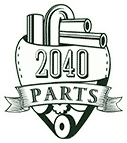Radiator Support Assembly Plastic Core Hy1225160 For 2009-2010 Hyundai Sonata Se on 2040-parts.com
Carpartsoutlet, CA, US
Radiators & Parts for Sale
 79-93 ford mustang v8/v6 lx/gt/cobra 3-row/core full aluminum racing radiator mt(US $139.99)
79-93 ford mustang v8/v6 lx/gt/cobra 3-row/core full aluminum racing radiator mt(US $139.99) 95-97 ford ranger radiator core support assembly fo1225137 primered mazda b3000(US $112.59)
95-97 ford ranger radiator core support assembly fo1225137 primered mazda b3000(US $112.59) 05-09 frontier pathfinder xterra radiator support assembly replacement 2wd 4wd (US $120.30)
05-09 frontier pathfinder xterra radiator support assembly replacement 2wd 4wd (US $120.30) 1998-2001 nissan altima 2.4l 4-cyl dohc auto toc cool system radiator gxe gle se(US $73.55)
1998-2001 nissan altima 2.4l 4-cyl dohc auto toc cool system radiator gxe gle se(US $73.55) 2005-2010 scion tc cooling radiator air conditioning condenser fan motr blade(US $112.65)
2005-2010 scion tc cooling radiator air conditioning condenser fan motr blade(US $112.65) Coolant reservoir f3az-8a080-a(US $39.99)
Coolant reservoir f3az-8a080-a(US $39.99)
Volvo Group plans wirelessly charged bus line
Tue, 20 May 2014There's one bit of futuristic transportation technology that seems to get trotted out almost as often as autonomous cars, electric cars and flying cars: Inductive, or wireless, charging for city buses. It's not as sexy or as memorable as the perpetually out-of-reach commuter-grade Harrier jet, but it uses proven technology (GM's EV-1 uses inductive charging, as do electric toothbrushes) to save or eliminate fuel and to reduce emissions. And unlike the flying car, induction-charged buses are hardly fantasy: They've been used in European cities for over a decade, South Korea started testing a fleet last year and Utah got in on the act recently.
Porsche recalls Carrera, Carrera 4 for tailpipe fix
Thu, 28 Feb 2013Porsche announced last week that it will recall more than 2,200 Carrera and Carrera 4 911s because internal testing indicated the tailpipe could crack and detach from the rear muffler on vehicles with more than 25,000 miles. Affected vehicles include 2012 and 2013 models built between March 7, 2012 and Nov. 12, 2012.
Porsche 911 GT3 R Hybrid (2011) first official pictures
Fri, 18 Mar 2011Porsche has released details of its updated 911 GT3 R Hybrid – the 2010 original nearly won last year's Nurburgring 24hr race before (ironically) it retired with petrol engine failure. The 2011 Porsche 911 GT3 R Hybrid – the lowdown Before this report disappears in a chorus of ‘it looks the same as last year’s one’, let's outline where Porsche’s engineers have been busy. At the unfashionable end of the car remains a 4.0-litre flat-six engine producing approximately 470bhp. Up front are twin electric motors, now producing 75kW of power each (up from 60kW) and combined these give the GT3 R Hybrid a 197bhp electric boost, which can be programmed to activate automatically via the throttle pedal, or manually selected during overtaking. F1-derived hybrid tech for the 911 GT3 R Hybrid Power for the two electric motors doesn't come from batteries, but flywheel accumulator technology from Williams Hybrid Power, an offshoot of the Williams Formula 1 team. The flywheel, encased in a carbonfibre safety cell in the space where the passenger seat would be, spins at up to 40,000rpm and acts as a mechanical energy store for the electric motors. Regenerative braking feeds energy back into the flywheel system – no surprises there, as the technology is derived from Williams' exeprience with Kinetic Energy Recovery Systems (KERS) in F1.

